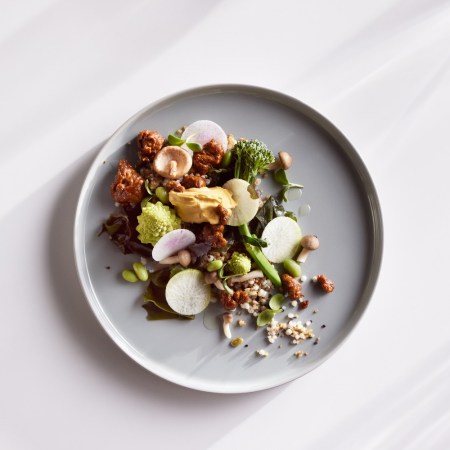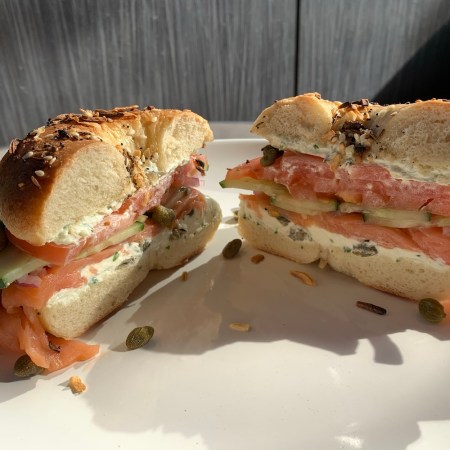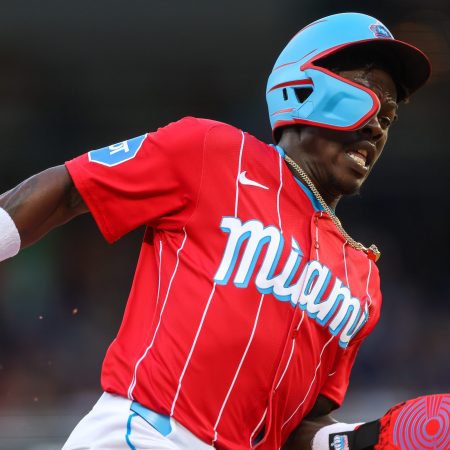Editor’s note: Jonathan Gold, one of the great food writers of his generation, passed away this weekend at 57. In March 2016, we sat down with him to speak about the evolution of L.A.’s culinary world throughout his career, from forgotten restaurants to the secret to finding a good hole in the wall to the dish he regards as the city’s most iconic. That story is reprinted here today in his memory.
“I spend so much time driving around,” says Jonathan Gold, Pulitzer Prize-winning food critic and the subject of City of Gold, a new documentary out in local theaters today. “But that’s a Los Angeles experience, right?”
It’s certainly the L.A. experience outsiders perceive. Where outsiders are wrong is that our city’s automotive-first design is a fault.
“So much of Los Angeles to me is the ecstasy of movement,” says Gold. “It’s about the beauty we see from our car windows. Sometimes driving down a street for 40 miles is actually the way to experience things.”
We asked Gold about how his movie came to be, his approach to writing and what he considers to be L.A.’s most iconic dish.
Hint: it’s not what you would think.
InsideHook: How did this documentary come about? Did Laura Gabbert (director/producer) approach you with the idea?
Jonathan Gold: It was kind of funny — I donated a sort of “dinner with a critic” to a silent auction at a friend’s school, and Laura got it. We went to the first iteration of Ludo Bites back when it was in a bakery in West Hollywood. She brought it up, and I was sort of “Haha, very funny.” After the dinner she kept calling and we had coffee, and a few months later it turned out that my son ended up going to the same school that her kids went to. When you see someone every day at the drop-off line it becomes almost unavoidable. At this point I’d be eating in restaurants and people would be Instagramming me eating chips and salsa before the first margarita showed up. The idea of anonymity seemed ridiculous so I figured, why not?
IH: You seem to me as much a cultural anthropologist as a critic, but I guess that’s because I often associate food criticism with judgment. Your work seems free of that judgment. How did you come to this approach?
JG: To me, this thing of going into restaurants and saying “This one’s good, this one’s bad” is the least interesting part of it. I tend to be more descriptive than evaluative, and I’m perfectly aware that there are meals that I have that are brilliant, but a huge percent of my readership isn’t going to like them at all, and I try to convey that without saying that a place is a “bad” restaurant when in fact it isn’t a bad restaurant.
Trailer for City of GoldCity of GoldGet a taste of the documentary2:33
My criteria used to be that if a place did a dish better than anyone else in California, that was the place to write about. If a place does a particularly exceptional spaghetti carbonara, do I care if the chicken is boring? Well, a little bit. But if I’m excited enough about the spaghetti to de-emphasize the parts I don’t like as much, I’d write about those experiences. I’ll have the pleasure to be out in front of the displeasure.
There are so many food writers that never vary their gaze six inches from what’s on the plate. They’ll describe one dish, then another dish and then another dish, and then they’ll look around the room for a second and try to tell you what the people are wearing and then look at another dish. When you look at food without referencing who’s cooking it and what the ingredients are and how they might’ve been produced, you might as well be describing a stamp collection.
IH: Do you have any tips or hunches you follow for picking out a good hole in the wall?
JG: I don’t necessarily look for holes in walls, but yeah, sometimes if a place is weirdly crowded and nothing else is, that could mean that the food is killer or it could mean that it’s 50 cents cheaper. Sometimes I’ll do odd internet searches. There will be a menu someone has taken a picture of in Vietnam, and I’ll type in the name of the dishes in Google and maybe one of them will lead me to a place in Little Saigon. There are Korean and Chinese restaurant websites that are basically discussion platforms, and you can put those into Google Translate. The other thing that’s incredibly effective is to go into every restaurant on a particular street or in a mini mall, and sometimes you’ll find something you’re absolutely not expecting, and there’s something beautiful about that.
IH: What’s one major change in L.A.’s culinary scene since you began writing?
JG: Well there have been so many, right? I think the lasting legacy of what’s happening in Los Angeles restaurants right now … is the second generation of people, the ones who grew up in a Vietnamese, Mexican or Chinese family, go off and work in a famous restaurant and go to cooking school, come back and use their training to transform the flavors that they grew up with. Places like Lukson, Taco María, Broken Spanish…
IH: Would Night Market qualify for what you’re referring to?
JG: Night Market so qualifies for something like that. Kris Yenbamroong went to NYU in film, he worked with Richard Kern, the edgy photographer, and he came back and it was almost like he was throwing parties in the spare room next to his parents’ restaurant and it became something great.
IH: Is there a restaurant you miss the most that’s been shuttered?
JG: Tons of them. I don’t know why I’m thinking of Jason’s at the moment, which is not the one you’d expect me to say, but there are so many. Alegria I miss, which is where Trois Familia is now, and I love that place too. It’s the thing with the restaurant scene: there’s always loss. Campanile was the place during the time in my life when I didn’t review I probably went to four or five times a week. I miss that place. It’s Republique now. The one place in the film that’s gone that I miss is Antojitos Carmen. They shut it down and moved to Iowa. Why did you do that? Your salsa de semilla was so good!
IH: What do you think is the most iconic L.A. dish?
JG: That’s a really interesting question. I think 10 years ago, I would have said the Caesar salad, which was invented in Tijuana but like so many great things came up north about 10 minutes after it was devised and has desperate flavors that seem so incongruent but come so well together and depend absolutely on first-rate produce. But I’m starting to think that since we’re in 2016, the emblematic dish is maybe the bulgogi taco at Kogi.
This article was featured in the InsideHook LA newsletter. Sign up now for more from the Southland.























